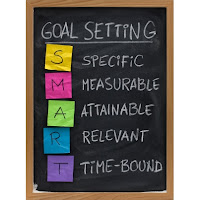New Year, New YOU! We often start the year off with the best intentions. By the end of January, we may lag in our efforts. What makes change stick? How do we stay motivated to keep on keeping on with our intention to accomplish our goal?
First we need to make the connection, on a very deep level, between the end result and our need for that end result. For example, take the common intention of losing weight or getting in good physical shape. Tie this to improving some aspect of our health, something tangible. Now we are more likely to stick to the steps it takes to make that change.
 Secondly, we must make our goal SMART:
Secondly, we must make our goal SMART:
- Specific – What do I want to achieve?
- Measurable – How will I measure my results?
- Attainable – Is my goal achievable?
- Realistic – Is my goal realistic?
- Time-bound – What is my time frame for achieving my goal?
My goal is to lose weight to minimize acid reflux (specific). As my eating habits change, I immediately appreciate a change in my digestion (measurable). I cut out coffee, chocolate, desserts except on special occasions and mindless snacking (attainable & realistic). As I lose weight, I feel better. Less weight means less pressure on my stomach/esophagus, hence less acid reflux (measurable result). For this whole process, I give myself six months (time-bound).
Share your goal with someone. When you declare your goal, you solidify your commitment to action and to attaining your goal.
You can do this. Stickability happens when you realize that the gains of achieving your goal far outweigh the inconveniences of giving up those things that sabotage your goal. Baby steps all the way! Set small goals or sub-goals, also called short-term goals, towards attaining your BIG goal. Before you know it, you’ll have chipped away at what first seemed huge, and you’re there: ready to set your next goal. Happy 2017!